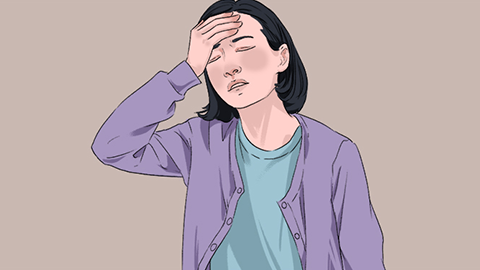Why does fever occur at night but not during the day with Type A flu, and what should be done?
Generally speaking, "Jia Liu" refers to influenza A, and "fever" refers to elevated body temperature. Developing fever at night but not during the day in patients with influenza A may be caused by changes in thermoregulatory rhythm, slowed nighttime metabolism, upper respiratory tract infection, viral pneumonia, myocarditis, or other reasons. Treatment options include general care and medication under a doctor's guidance. If symptoms of influenza A appear, timely medical consultation and following medical advice for treatment are recommended. Detailed explanations are as follows:

1. Changes in Thermoregulatory Rhythm
The human thermoregulatory system exhibits circadian rhythm variations. The body's temperature set point may be relatively higher at night, making patients with influenza A more prone to fever during nighttime. This is a normal physiological response of the body to viral infection. It is recommended to maintain a regular sleep schedule and avoid excessive fatigue to enhance immune function.
2. Slowed Nighttime Metabolism
At night, the metabolic rate and blood circulation in the human body are generally slower, which may allow viruses to replicate more actively, thereby triggering or worsening fever symptoms. It is advisable to maintain healthy lifestyle habits such as balanced nutrition and moderate exercise to help improve nighttime metabolism.
3. Upper Respiratory Tract Infection
Upper respiratory tract infections are primarily caused by viral or bacterial infections and environmental factors. If an upper respiratory tract infection develops secondary to influenza A, increased secretion in the throat may accumulate and irritate the throat when lying down at night, triggering an inflammatory response and fever. Symptoms may include sore throat, swollen tonsils, and yellow sputum production. Patients are advised to follow medical instructions for treatment with medications such as amoxicillin-clavulanate potassium, cefuroxime axetil granules, levofloxacin tablets, etc.
4. Viral Pneumonia
Viral pneumonia is an inflammatory condition of the lungs caused by downward spread of an upper respiratory tract viral infection. The influenza A virus may lead to viral pneumonia, causing pulmonary inflammation and immune responses. Fever may be more likely at night due to worsening inflammation or heightened immune activity. Symptoms may also include coughing, sputum production, and chest pain. Patients may use azithromycin tablets, moxifloxacin tablets, injectable penicillin sodium, and other medications under medical guidance to alleviate symptoms.
5. Myocarditis
Myocarditis is primarily caused by viral invasion of the heart. The influenza A virus may infect the myocardium, causing myocarditis. Myocarditis leads to impaired cardiac function and inflammatory responses, and fever may be more likely at night due to increased cardiac workload. Associated symptoms may include palpitations, chest tightness, and fatigue. Patients may follow medical advice to use medications such as coenzyme Q10 capsules, vitamin C tablets, prednisone tablets, etc., for treatment.
During peak flu season, it is recommended to avoid crowded places and minimize contact with individuals who have flu-like symptoms to reduce the risk of infection.






